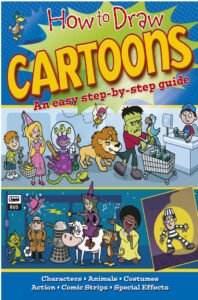NCERT Exemplar Problems Class 6 Science – Getting to Know Plants
Question 1:
Which of the following combination of features would you observe in grass?
(a) Parallel venation and fibrous root
(b) Parallel venation and tap root
(c) Reticulate venation and fibrous root
(d) Reticulate venation and tap root
Solution:
(a) Grass has parallel venation in leaves (veins run parallel to one another on both sides of the mid rib) and fibrous root system (bunch of similar size fibre-like roots).
Question 2:
Which of the following is the correct match between the characteristics of stem and the category of plant?
(a) Weak stem which cannot stand upright: Creeper
(b) Green tender stem: Shrub
(c) Thick, hard stem with branching near the base : Tree
(d) Thick, hard stem with branches high on the plant: Herb
Solution:
(a) A creeper is a plant having thin, long and weak stem, which cannot stand upright and spreads on the ground, e.g. Money plant. The rest can be corrected as :
Shrub Hard woody stem with branching near the base, e.g. Jasmine.
Tree Hard thick woody stem with branching much above the ground on the stem, e.g. Banyan, neem
Herb Non-woody, soft delicate, green tender stem e.g. Sunflower, tomato.
Question 3:
Which of the following is not the primary function of stem?
(a) Conduction of water
(b) Photosynthesis
(c) Formation of branches
(d) Bears flowers and fruits
Solution:
(b) Photosynthesis is not the primary function of stem. It is a function of leaves. Whereas, conduction of water and minerals from roots to other parts, formation of branches, bearing flowers and fruits and holding the plant upright are main functions of a stem.
Question 4:
Which of the following is not a correct match?
(a) Petiole: attaches leaf to stem
(b) Lamina: green flat part of leaf
(c) Margin: gives shape to the leaf
(d) Veins: transpiration
Solution:
(d) Veins provide support to the leaf and carry water and dissolved minerals to the leaf and food away from the leaf. Transpiration takes place through the minute pores on the surface of a leaf called, stomata (transpiration is evaporation of water from plants).
Question 5:
Read the following sentences about photosynthesis.
- Sunlight, carbon dioxide, chlorophyll and water are necessary.
- Oxygen is absorbed.
- Leaves carry out photosynthesis.
- Proteins are made during photosynthesis.
Choose the correct pair of sentences that is true to photosynthesis.
(a) (3) and (4)
(b) (1) and (3)
(c) (2) and (4)
(d) (1) and (4)
Solution:
(b) Statements (1) and (3) are correct.
Photosynthesis is the process by which leaves prepare food. Sunlight, carbon dioxide, chlorophyll and water are necessary for it.
The other sentences can be corrected as:
- Oxygen is released (not absorbed) during this process.
- Carbohydrates (not proteins) are made during photosynthesis.
Question 6:
Which of the following terms constitute the female part of the flower?
(a) Sepals, petal and stamen
(b) Stigma, style and ovary
(c) Ovary, stamen and stigma
(d) Ovary, style and stamen
Solution:
(b) The pistil or carpel is the female part of a flower. It is made up of three parts as: Stigma Top part of pistil. It is sticky and receives pollen.
Style Middle part of pistil. It is a tube that connects stigma to ovary.
Ovary Swollen part at the bottom of pistil that contains ovules.
Very Short Answer Type Questions
Question 7:
- The small green leaves at the base of flowers are known as ………..
- The swollen basal part of the pistil is the ……….. which bears the …………..
- Stamen has two parts called ………….. and ………….
- The young unopened flower is termed as ………
Solution:
- sepals
- ovary; ovules
- anther; filament
- bud
Question 8:
Solve the riddles given below
(a) I have a green tender stem and I am much shorter than you. Who am I?’
(b) I come out first from the seed when it is soaked in water. I provide anchorage to plants. Who am I? Write another function that I perform.
Solution:
(a) Herb, because it has a green tender stem that bends easily and is short-sized (usually do not grow more than 1 m in height).
(b) Root is the first part that comes out of a seed and provides anchorage to plant. Another function that it performs is absorption of water and minerals from the soil.
Short Answer Type Questions
Question 9:
Match the parts of plant given in Column I with their function in Column II.

Solution:
The correct matching is as given
(a) —(iii), (b)—(ii), (c)—(iv), (d)—(v)
Note: Plants do not have specialized excretory organs.
Question 10:
Boojho wanted to test the presence of starch in leaves. He performed the following steps:
- He took a leaf and boiled it in water.
- He placed the leaf in a petti dish and poured some iodine over it.
He did not get the expected result. Which step did he miss? Explain.
Solution:
Boojho did not get the expected results in his experiment because he missed an important step in the procedure.
He did not boil the leaf in alcohol or spirit to remove chlorophyll (green colour) from the leaf. It is necessary to remove chlorophyll because it interferes with the test for starch. The decolourised leaf, on adding iodine turns blue-black, showing the presence of starch.
Question 11:
Will a leaf taken from a potted plant kept in a dark room for a few days turn blue-black when tested for starch? Give reason for your answer.
Solution:
No, a leaf from a potted plant kept in dark will not turn blue-black when tested for the presence of starch.
This is because all the stored starch would have been used up by the plant. No fresh starch would be synthesised by leaves due to non-availability of sunlight (i.e. no photosynthesis can occur, thus no food is prepared).
Question 12:
Can the stem of a plant be compared with a street with two ways traffic? Give reason.
Solution:
Yes, the stem of a plant can be compared with a street with two ways traffic because movement of substances occur in different directions in it.
- It carries water and minerals from the roots to the leaves and other parts of plant in upward direction.
- It takes the food prepared by the leaves to other parts of the plant, in downward direction.
Long Answer Type Questions
Question 13:
Read the function of parts of a plant given below:
(a) fixes plant to the soil
(b) prepares starch
(c) takes part in reproduction
(d) supports branches and bears flowers
In the diagram, write the names of the parts whose function you have just read at the appropriate space.

Solution:
Functions of parts of a plant labelled are :
(c) Flower (takes part in reproduction)
(d) Stem (supports branches and bears flowers)
(b) Leaf (prepares starch)
(a) Root (fixes plant to the soil)

Question 14:
Draw the veins of leaves given in the figure below and write the type of venation.

Solution:
The veins of leaves and their type of venation are:

Question 15:
Observe the figure and attempt the questions that follow it.

(a) Label the parts (i), (ii), (iii) and (iv) in the figure.
(b) What type of venation does the leaf has?
(c) What type of venation is seen in grass leaves?
Solution:
(a) In the given figure:
(i) Petiole
(ii) Mid rib
(iii) Lamina
(iv) Vein
(b) The leaf has reticulate venation, the veins in leaf occur in an irregular way forming a net-like structure.
(c) Grass leaves have parallel venation. The vein run parallel to each other on both sides of mid rib.
Question 16:
Observe the figure of an activity given as figure, carried out with leaves of plants and polythene bag. Now answer the following.
- Which process is demonstrated in the activity?
- When will this activity show better results on a bright sunny day or a cloudy day?
- What will you observe in the polythene bag after a few hours of setting up the activity?
- Mention any one precaution you must take, while performing this activity.

Solution:
- The process demonstrated in the activity is transpiration. It is loss of water in the form of vapour from plant.
- The activity will show better results on a bright sunny day because transpiration ,s maximum in sunlight.
- After a few hours of setting up the activity, one can observe small droplets of water inside the polythene bag. Since, the leaves are enclosed in polythene bag. the water vapour cannot escape into air and keeps on collecting inside the polythene bag.
- A major precaution one must take, while performing this activity is that the polythene bag should be clean and dry and its mouth should be sealed properly to make the set-up air-tight. Also, the twig should be fresh with 10-12 leaves.
Question 17:
Identify the wrong statements and correct them.
(a) Anther is a part of the pistil.
(b) The visible parts of a bud are the petals.
(c) Lateral roots are present in a tap root.
(d) Leaves perform the function of transpiration only.
Solution:
(a) It is wrong.
Correct statement – Anther is a part of stamen.
(b) It is wrong.
Correct statement – Visible part of a bud are the sepals.
(c) It is correct.
Tap root is the main root and the smaller side roots are called lateral roots.
(d) It is wrong.
Correct statement – Leaves perform three main functions, i.e. photosynthesis, transpiration and respiration.
Question 18:
Solve the crossword given in figure as per the clues given below it.

Across
1. The term that describes upward movement of water in a stem.
3. The part of Leaf, which is attached to the stem.
5. This part is attached to the tip of filament.
Down
1. Plants that are weak and spread on the ground.
2. Ovules are present in this part of flower.
4. It is the broad part of leaf.
Solution:
Across
1. CONDUCTION
3. PETIOLE
5. ANTHER
Down
1. CREEPERS
2. OVARY
4. LAMINA

Question 19:
Fill in the blanks with the terms that are listed below, [anther, male, ovary, ovule, petals, pistil, stamen, filament]. Sepals …(a)…, stamens and …(b)… are the parts of a flower. Stamen is made up of …(c)… and …(d)… and it represents the …(e)… part of the flower. The female part of the flower is called the …(f)…. The basal, swollen part of the pistil is called the …(g)… which contains the …(h)
Solution:
(a) petals
(b) pistil
(c) anther
(d) filament
(e) male
(f) pistil
(g) ovary
(h) ovules

